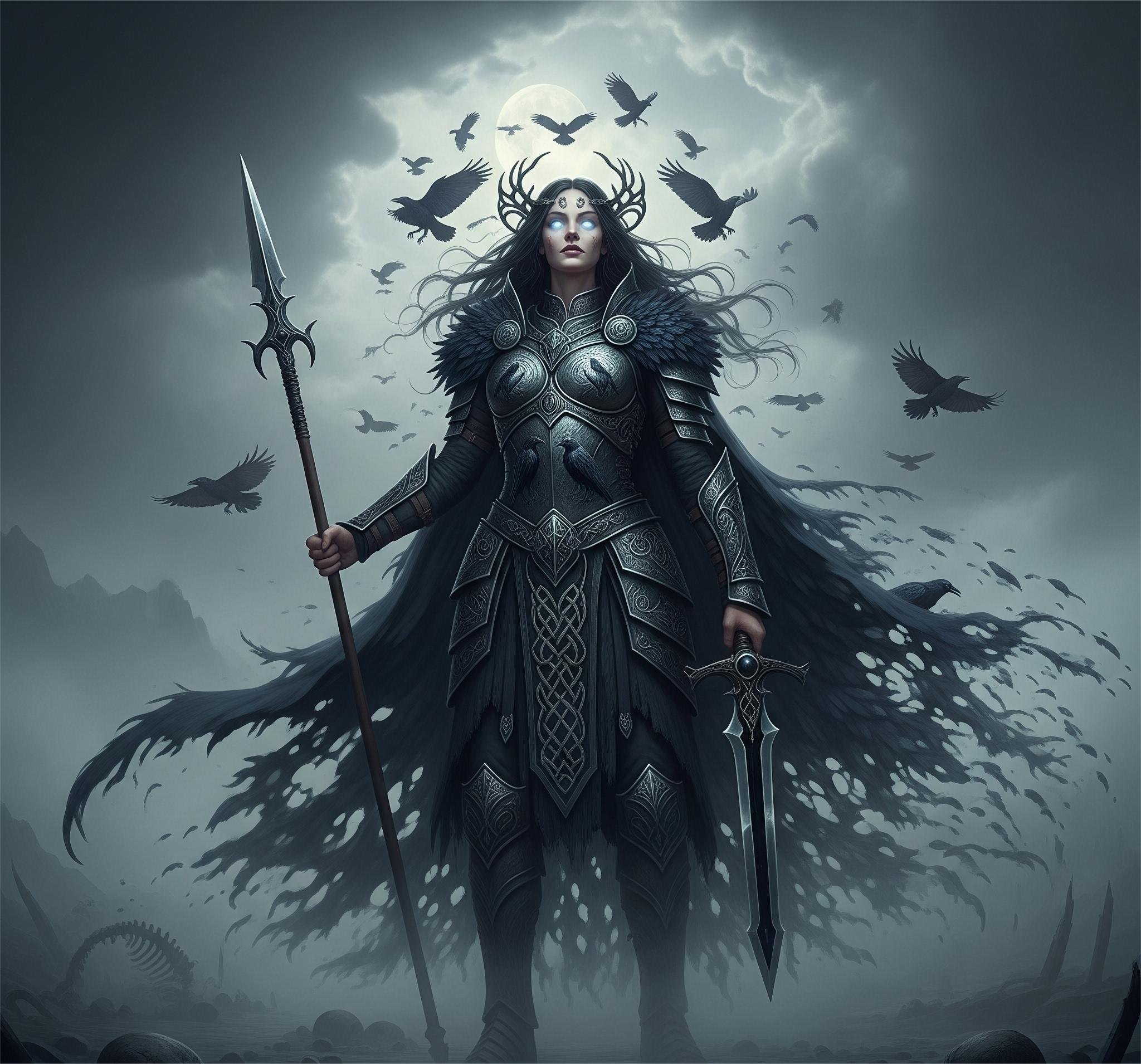In the swirling mists of Celtic mythology, few figures are as enigmatic and powerful as The Morrígan—often called the Phantom Queen. She is a goddess shrouded in blood, prophecy, and transformation, revered and feared as a symbol of life’s most primal forces: war, sovereignty, death, and rebirth.
But who was this mysterious goddess, and why did ancient Celtic peoples honor her with such reverence and dread?
Who Is the Morrigan?
The Morrigan is a complex deity from Irish mythology, often depicted as a trinity of sisters—Badb, Macha, and Nemain—though sometimes she appears as a singular force. Her name likely derives from Mór Ríoghain, meaning "Great Queen" or "Phantom Queen", hinting at her deep, mystical ties to both rulership and the otherworld.
She is primarily known for:
Shaping the outcomes of battles
Foretelling death and fate
Taking the form of a crow or raven, symbols of death and prophecy
The Morrigan doesn’t just represent death—she controls it, commands it, and transforms it into a source of power and renewal.
The Goddess of War and Sovereignty
In Irish epics like the Táin Bó Cúailnge (The Cattle Raid of Cooley), the Morrigan plays a crucial role:
She intervenes in battle, sometimes offering aid, other times chaos.
She is known to appear to warriors before death, either as a beautiful woman or a terrifying hag.
Her presence is both an omen and a test, often representing the land itself offering sovereignty to a worthy ruler.
The Morrigan’s power is deeply territorial and political. To be chosen by her meant legitimacy, strength, and connection to the very soul of Ireland.
Mistress of Prophecy and Fate
The Morrigan is also a seer of doom.
She often appears before battles, delivering grim prophecies in riddles and verse.
She speaks in poetic triads, weaving fate into language and song.
Like the Greek Moirai or Norse Norns, she embodies the unstoppable flow of destiny, but with an eerie intimacy that connects directly to the battlefield and death.
In this way, she’s not just a goddess of war—she is war’s inevitability, its tragic poetry, and its dark beauty.
Shapeshifter and Otherworldly Being
One of the most famous aspects of the Morrigan is her ability to shape-shift:
She often takes the form of a crow or raven, circling above battles as a harbinger of death.
She can become a wolf, an eel, a cow, or a beautiful woman, each form representing a different aspect of power or cunning.
Her fluid identity emphasizes her connection to liminality—the spaces between life and death, peace and war, human and divine.
The Morrigan is a threshold goddess, always perched between realities.
Worship and Rituals
While concrete details of Morrigan worship are scarce due to the oral nature of Celtic religion and Christian suppression, we do know:
She was likely honored at sacred rivers and battlefields, especially where ravens gathered.
Some believe Samhain (the Celtic New Year and festival of the dead) had rites involving the Morrigan, invoking her guidance through the dark half of the year.
Offerings of milk, blood, or song were made to appease or communicate with her.
Sites such as the River Unius (Boyne) and the hill of Oweynagat (the Cave of Cats) in Rathcroghan are thought to be associated with her power.
The Morrigan in Modern Thought
Today, the Morrigan has seen a resurgence in neopagan and spiritual circles, celebrated for:
Feminine empowerment—a warrior woman unafraid of destruction and rebirth
Embracing shadow work—understanding our darker selves as a source of growth
Connection to ancestry and land—many modern Irish pagans honor her as a national guardian
She appears in literature, fantasy, and pop culture as a dark goddess archetype, blending wisdom, terror, and seduction.







